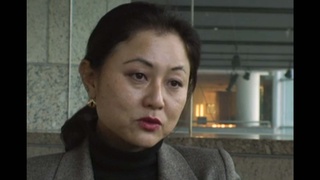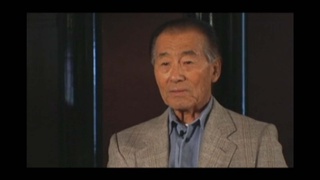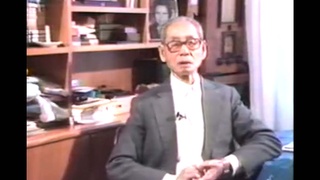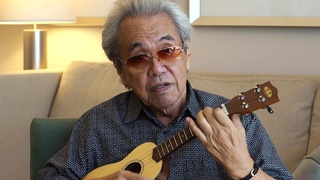Interviews
Miscommunications
I asked if she would meet me in Kamakura again, to see the Daibutsu I guess, that's how it happened. And so I...the next couple—it was a week later anyway—we were to meet again in Kamakura. I came all the way from Kamakura and I went to the meeting place and no Hamako—she didn't show up. So I got real mad to be stand—stood off by a Japanese girl and so it happened that she couldn't help it, she wrote a letter to me and...at this building where I was located in Japan, I mean in Tokyo...oh gosh I wish I could remember it. But anyway, the letter was intercepted by the army and the letter said, something...I couldn't make it this week that we had the date and...but I didn't know because the army would not allow any correspondence between officers and enemy people—which the Japanese were at that time—considered.
And so, let's see I don't know how she came and apologized, she showed me the letter that was sent back to her—the army intercepted it and sent back to her—so she showed me the letter and so I couldn't get mad then so from then on we dated.
Date: January 26, 2012
Location: California, US
Interviewer: John Esaki, Yoko Nishimura
Contributed by: Watase Media Arts Center, Japanese American National Museum
Explore More Videos

Concentration camp from a Japanese mother’s point of view (Japanese)
Shin-Issei from Gifu. Recently received U.S. citizenship

Meeting other Americans in jail
(1916-2010) draft resister, helped form the Heart Mountain Fair Play Committee


People with talent in the 100th infantry battalion
(1919 - 2006) World War II and Korean War veteran


Makegumi - Movement to regognize the defeat of Japan (Japanese)
A central figure for the “Makegumi” (defeatists)

Strictly American, but sympathize with Japan
(1919-2020) Member of the 1800th Engineering Battalion. Promoted Japan-U.S. trade while working for Honda's export division.

Not able to go to Manzanar on a furlough
(1919-2020) Member of the 1800th Engineering Battalion. Promoted Japan-U.S. trade while working for Honda's export division.

Enlisting in the U.S. Army (Japanese)
(1928 - 2008) Drafted into both the Japanese Imperial Army and the U.S. Army.

Father's Service in WWII
(b. 1930) Half Japanese and grew up in both Japan and the United States.

Moving to Upland Post-Camp
(b. 1930) Half Japanese and grew up in both Japan and the United States.

Kindergarten in Davao, Philippines
(b. 1938) Philipines-born hikiagesha who later migrated to the United States.

Family was shipped back to Japan after the war
(b. 1938) Philipines-born hikiagesha who later migrated to the United States.


Life in the Philippines
(b. 1938) Philipines-born hikiagesha who later migrated to the United States.
